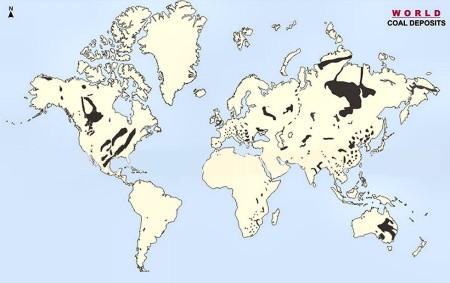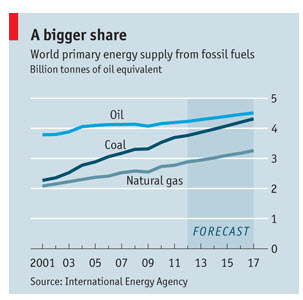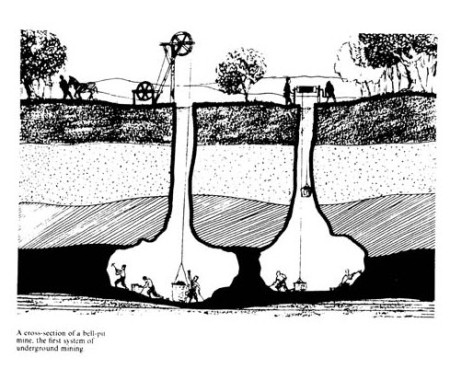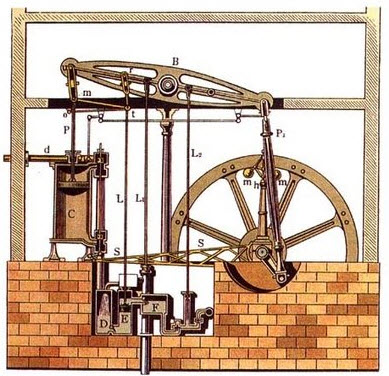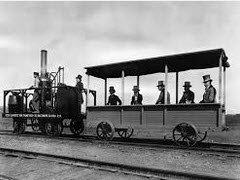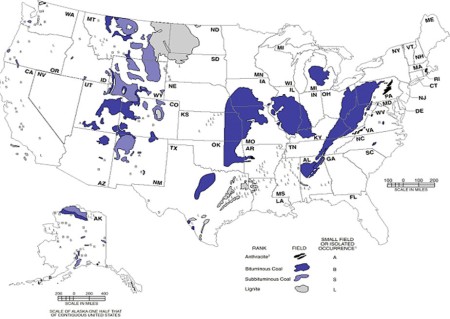The production and use of coal has a very long history. Coal has been mined at a small scale since pre-historic times, but it truly became the dominant global fuel in the 18th century, providing the energy required by the technological advances of the Industrial Revolution.
Today, many people are surprised to discover that coal is equally as important as oil and gas in the modern energy mix, providing ~1/3rd of global daily energy demand and, as it is dominantly used for power generation, ~ 42% of the world’s electricity.
Coal use is also growing rapidly. China’s coal demand tripled between 2001 and 2011, from 600 million tonnes of oil equivalent to nearly 2 billion tonnes of oil equivalent. Today, China’s domestic coal industry produces more primary energy than Middle Eastern oil does. And over the next few decades coal is predicted to be the fastest growing global energy source, growing by over 1 billion tonnes of oil equivalent by 2030. This is more than either conventional or shale gas, and almost double the growth in conventional oil and shale oil combined.
Coal’s long history is due to its relative abundance and the fact that early deposits could be easily mined.
The History of Coal
- Small scale drift mines and bell pits have been used since pre-historic times. Flint working sites are found adjacent to ancient pits at Grimes Graves in Norfolk, western England, and flint axes have been found embedded in preserved coal excavations in Monmouthshire and Derbyshire in the North of England.
- The earliest reference to the use of coal in metalworking is found in “On Stones (Lap.16) by Theoprastus (371-287BC)
- The earliest references to coal extraction in China date from around 200BC.
- The Romans exploited most of Britain’s coalfields by the late 2nd century AD, with trade developing along the North Sea coast and with the Rhineland. Coal was used in hypocausts to heat public baths and even for heating of wealthy villas. Coal stores have been found at many forts along Hadrian’s wall, with a nearby smelting furnace found at Longovicium.
- After the collapse of the Roman Britain coal use is not recorded again until the 12th century, when coal began to be traded between Scotland, northeast England, and London, mainly for metal working and smelting. Coal was mined by monks from simple bell pits and adits in Culross, Dunfermline, Newbattle, and Edinburgh.
- In 12th century China, iron works, fed by coal, produced more pig-iron in just one region than the whole of Britain produced in Britain annually in the 1700s.
- During the 13th century the trading of coal increased across Britain and by the end of the century most of the coalfields present in the UK were being worked on a small scale. A charter was granted to the Abbot of Dunfermline in 1291, allowing his monks to dig for coal in Pittencrieff, Fife. A charter was also given to the freemen of Newcastle, allowing them to dig for coal unhindered.
- More intensive use of coal for artisanal use in London created pollution, and in 1306 a Royal Proclamation was issued prohibiting artisans from using coal in their furnaces and commanding them to return to wood and charcoal. Coal pollution would remain a problem in London for another 700 years.
- The earliest known use of coal in the Americans was by the Aztecs, who both burned it and carved it for jewellery.
- During the 14th century coal began to be used again in the UK for domestic heating in areas local to production. Edward III regulated trade in the commodity, allowing export of coal to Calais, which became an English port on mainland Europe subsequent to the battle of Crécy (1346).
- In the Americas during the 1300’s Hopi Indians used coal for cooking, heating, and baking of pottery.
- By the 16th century supplies of wood began to fall in Britain and the use of coal as a replacement fuel rapidly expanded.
- In 1575 Sir George Bruce of Carnock opened the first coal mine to extract coal from a moat pit under the sea on the Firth of Forth, constructing an artificial island into which a 40ft shaft was sunk, connecting to two drainage and ventilation shafts. At the time it was considered a wonder of the age.
- Scottish miners were bonded to their master by the 1606 “Anent Coalyers and Salters Act”, a regime that wasn’t revoked until the Colliers and Salters act of 1775 recognised this to be “a state of slavery and bondage”.
- Early extraction techniques such as bell pits would generally only recover a relatively small percentage of the in-place coal. For example, in Tyneside the pits extracted only ~40% of the available coal.
- In 1673-1674 Louise Joliet & Father Jaques Marquette mapped coal deposits (charbon de terra) in the Illinois River region, USA.
- By the late 17th century coal mining technology had advanced significantly, with test boring to explore for deposits, and chain pumps & water wheels for mine drainage.
- By 1683 some of the larger mines had begun to experiment with timber supports for the mine roof.
- In 1698 Tomas Savery from Devon, England, developed the Miner’s Friend, a steam engine that could pump 60 gallons a minute.
- In 1700 the annual output of coal from Britain was just under 3 million tonnes.

Cumulative coal output from northeast England (http://gpih.ucdavis.edu/files/Clark_Jacks.pdf)
- In 1701 coal was found by Huguenot settlers in the James River region, Virginia.
- In 1705 Tomas Newcomen developed the first steady-running atmospheric engine, the beam engine. This engine could draw water from a depth of >150 feet, and the first commercial example from 1711 replaced a team of 500 horses.
- The first recorded coal production in the US was in 1748, with 50 tons dug in Virginia. The first shipment was in 1758.
- Between 1767 and 1776 James Watt, a Scot, developed the separate condensing engine, improving Newcomen’s design – the Industrial revolution, transforming the world through the conversion of coal to mechanical energy truly began.
- In 1780 the annual output of coal from Britain was ~6 ¼ million long tons.
- Coal was discovered in Australia at Coal River (Hunter River) in 1795. A convict settlement was established in 1804 to mine the region – today the settlement, now called Newcastle, New South Wales, is the largest coal port in the world.
- The technological advances of the Industrial Revolution initially depended upon the availability of coal as fuel, feeding the improving technologies.
- By the end of the 18th century, surface and near surface deposits of coal had been exhausted and deep shaft mining began to develop. Ventilation techniques, including fans driven by steam engines were also developed.
- In 1814 coal was being burned to heat salt brines to create salt in Pennsylvania.
- In 1815, at the height of the Napoleonic war the annual output of coal from Britain was 16 million long tons.
- In the same year, both the Davy lamp & the Geordie lamp were invented in an attempt to reduce the danger of methane explosions or asphyxiant gas such as carbon dioxide. Miners were generally expected to purchase this (regrettably unreliable) equipment themselves.
- In 1816 Baltimore, Maryland began to light its streets with combustible gas made from coal.
- In 1830 the annual output of coal from Britain was over 30 million tons. Board and pillar extraction techniques were being used. Miners, unable to be replaced or driven to industrial efficiencies similar to that of wool or cotton mill workers began to form trade unions, campaigning for better wages and conditions.
- Also in 1830, Tom Thumb, the first American built steam locomotive was manufactured, the first of many locomotives that marked a surge in American coal consumption.
- In 1842 a UK Royal Commission was established to look into child labour conditions in the rapidly expanding coal industry.
Many young boys would start employment at 8-10 years old, opening and closing doors within the pit for wagons for 8—12 hours a day (with a half hour break for breakfast & another half hour for dinner), 6 days a week. Children under 13 represented ~10% of mining employment, with earnings starting at 3 shillings per week (~£20 in 2012 money). Employers discouraged labour from children of 6-7 years old, but would not prevent it when their parents took them to work, insisting that they earn a wage for the family. From ~13 years old door boys would move on to Hodding, or pulling the coal carts, often in extremely cramped and difficult conditions. http://www.cmhrc.co.uk/site/literature/royalcommissionreports/index.html. The link contains copies of all of the 1842 Royal Commission reports, including interviews captured in the inhabitants own language – it’s fascinating stuff… - In 1850 the annual output of coal from the US was 8.4 million short tons.

Comparative cost of steam vs horsepower (http://gpih.ucdavis.edu/files/Clark_Jacks.pdf)
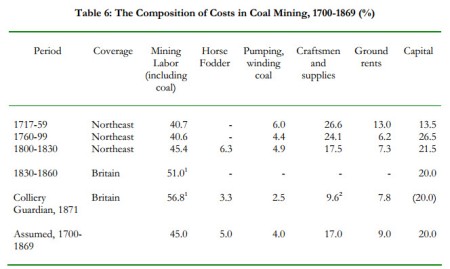
Relative costs in 19th century coal production (http://gpih.ucdavis.edu/files/Clark_Jacks.pdf)

The cost of coal-lease rents, 1710 to 1860s (http://gpih.ucdavis.edu/files/Clark_Jacks.pdf)
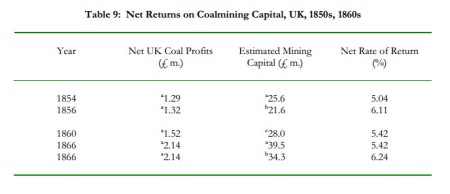
Rates of return for 19th century coal investment (http://gpih.ucdavis.edu/files/Clark_Jacks.pdf)
- In 1858 a mine at Dukinfield, England, reached a depth of 350 fathoms.
- By 1860 Philadelphia was so polluted by coal smoke that the London born novelist Anthony Trollope called it “the blackest place I have ever seen”.
- By the American Civil War the Union had a 38-1 advantage in coal production vs. the Confederate South.
- In 1870 the annual output of coal from the US was 40 million short tons.
- Thomas Eddison built the first practical coal-fired electric generating power station in 1882, supplying electricity to some residents in New York.
- In 1900 the annual output of coal from the US was 270 million short tons.
- In 1901 the General Electric company built the first alternating current power plant for the Webster Coal and Coke Company in Ehrenfield, Pennsylvania, eliminating the difficulties of long-distance current transmission.
- In 1968, at its peak, coal powered 60% of America’s electricity.
- In 1970 the annual output of coal from the US was around one billion short tons, a level that has broadly continued until today.
- Recognition of acid rain and additional environmental problems led to the EPA’s Clean Air Act in the 1970s.
- Coal use in the US has dropped rapidly in the last few years, as Unconventional gas production has surged. In 2010 coal powered 42% of US electricity, by 2012 it was just 33%.
- Today, China is the world’s leading producer and consumer of coal, burning 24% of the world’s supply to power 69% of its energy needs. Coal mining employs 3-6 million people, with ~30,000 legal coal mines in the country. Approximately 17,000 small, less regulated, mines account for a third of China’s coal output & there are thousands more illegal mines (one Chinese agency counted over 65,000). A Chinese coal worker earns between $70 and $200 a month.

